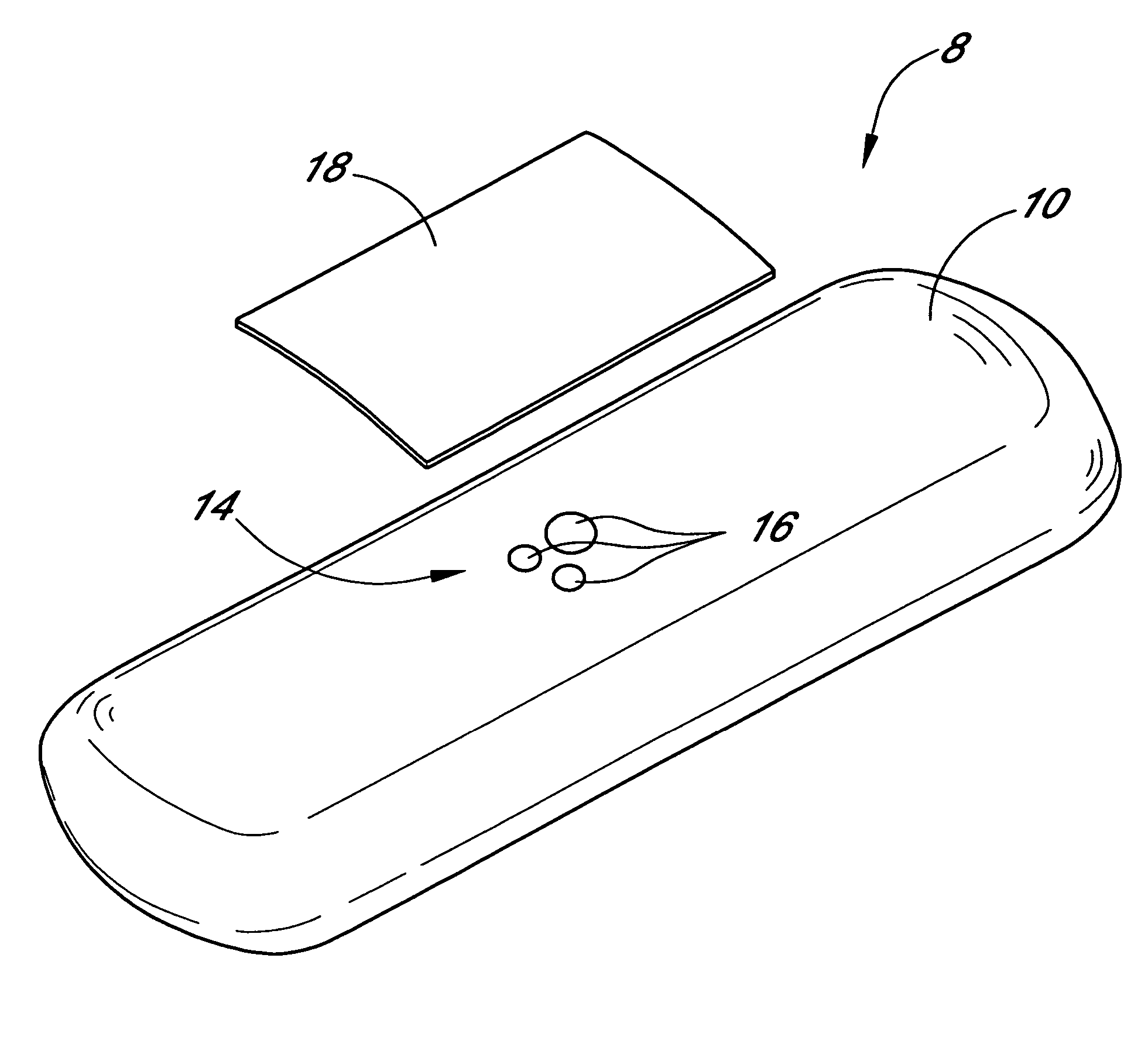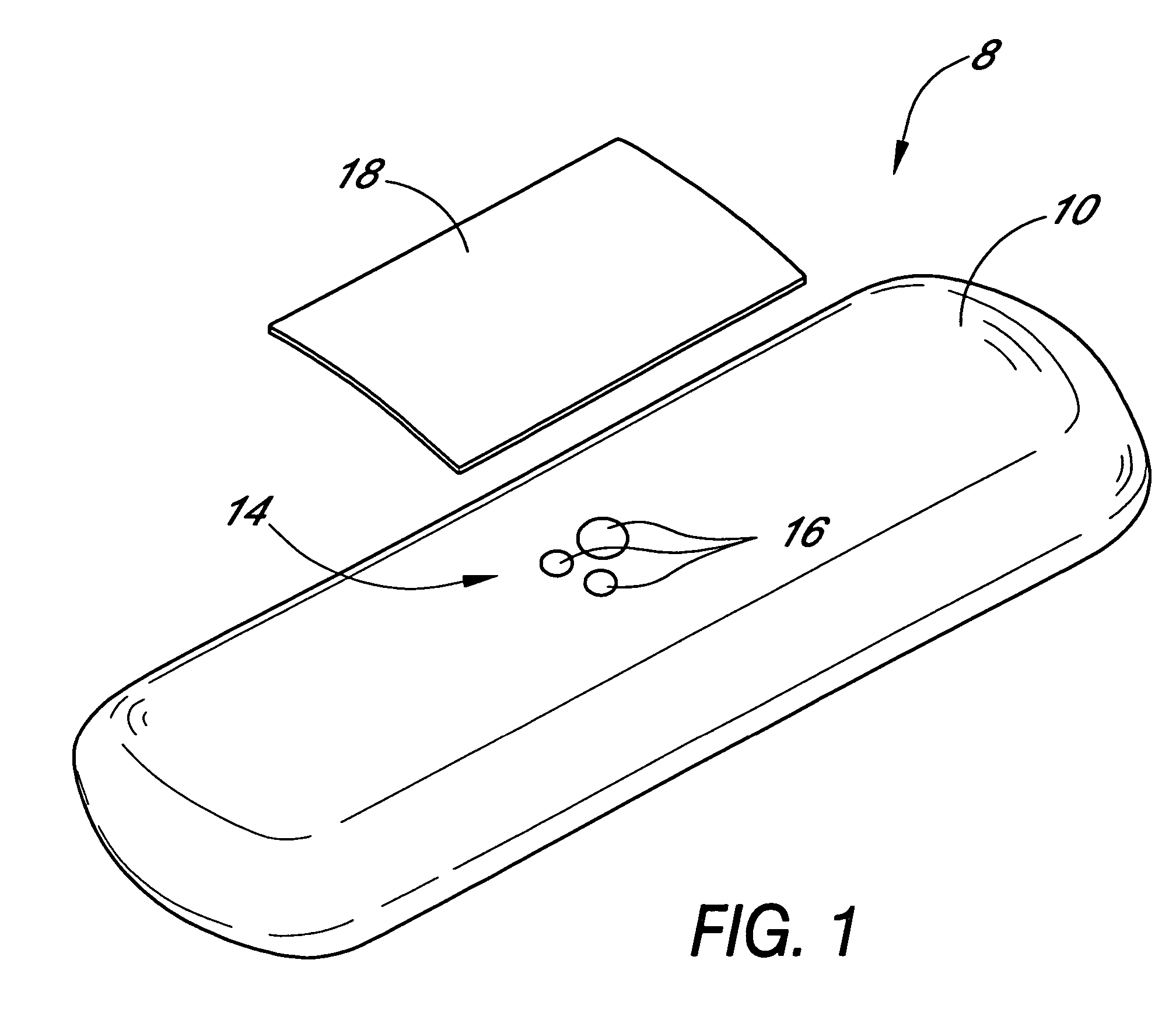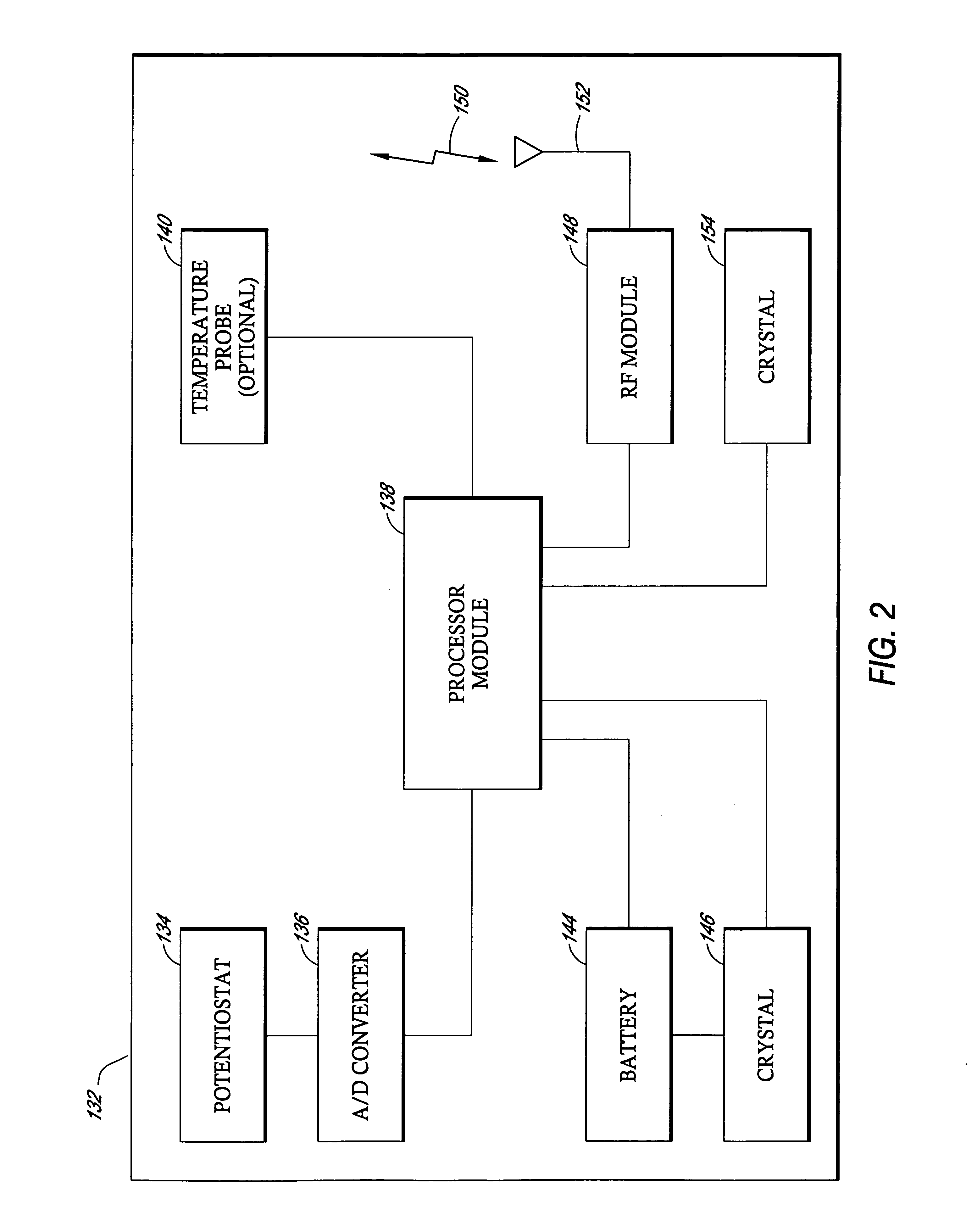Silicone based membranes for use in implantable glucose sensors
a technology of analyte sensor and membrane, which is applied in the field of membrane for use in implantable analyte sensor, can solve the problems of not knowing if the blood glucose value is going up (lower) or down (lower) based on conventional methods, and the risk of side effects
- Summary
- Abstract
- Description
- Claims
- Application Information
AI Technical Summary
Benefits of technology
Problems solved by technology
Method used
Image
Examples
example 1
MED-4840 / PLURONIC® F-127 Bioprotective Layer
[0129] 30 g of PLURONIC® F-127 (PF-127) was dissolved under stirring in 100 g of anhydrous acetone at 40° C. 13 g of acetone was added to 37.3 g of the PF-127 solution followed by adding 4.8 g of dicumyl peroxide (DCP). 40 g of MED-4840 was mixed in a speed mixer at a speed of 3300 rpm for 60 seconds. The MED-4840 mixture was then placed in a motorized mechanical mixer equipped with a spiral dough hook. The mixture was stirred at low speed for 30 s. The stirring speed was then increased to medium-low and the PF-127 / DCP solution was added at a rate of 3.5-4.0 g every 30 seconds. After all of the PF-127 / DCP solution was added, the mixture was stirred at medium speed for 3 minutes. The mixture was then placed in a Speed Mixer and mixed at 3300 rpm for 60 seconds. This process was repeated until the desired viscosity was reached.
[0130] 5-10 mL of the mixture was placed in an evenly-distributed line between the arms of the drawdown blade on a...
example 2
MED-4840 / PLURONIC® F-127 Diffusion Resistance Layer on Implanted Sensor
[0131] A MED-4840 / PLURONIC® F-127 membrane was manufactured using 8.4% PLURONIC® and 1.8% of a DCP cross-linking agent. This membrane was placed over a two-layer membrane having an enzyme layer and an electrode layer. The combined membrane layers were placed on a wholly implantable glucose sensor. The sensor was sterilized and implanted into a diabetic rat model. FIG. 6 is a graph depicting the resulting glucose sensor measurements over the course of approximately two months. The small points in FIG. 6 depict glucose concentrations measured by the sensor and the large points depict glucose concentrations measured by separate blood glucose assays. The graph indicates a close correlation between the sensor glucose measurements and the blood glucose measurements.
example 3
MED-4840 / PLURONIC® F-127 Bioprotective Layer on Implanted Sensor
[0132] A MED-4840 / PLURONIC® F-127 membrane was manufactured using 20% PLURONIC® and a 20:1 ratio of DCP cross-linking agent per PLURONIC®. Prior to curing, the material was drawn down and a cell-disruptive porous silicone membrane was placed on the uncured layer. After curing, the combined bioprotective / porous silicone membrane was placed over a four-layer membrane having a diffusion resistance layer, enzyme layer, interference layer, and electrode layer. The combined membrane layers were placed on a wholly implantable glucose sensor. The sensor was sterilized and implanted into a diabetic rat model. FIG. 7 is a graph depicting the resulting glucose sensor measurements over the course of approximately two months. The small points in FIG. 7 depict glucose concentrations measured by the sensor and the large points depict glucose concentrations measured by separate blood glucose assays. The graph indicates a close correla...
PUM
| Property | Measurement | Unit |
|---|---|---|
| acquisition time | aaaaa | aaaaa |
| frequency | aaaaa | aaaaa |
| power | aaaaa | aaaaa |
Abstract
Description
Claims
Application Information
 Login to View More
Login to View More - R&D
- Intellectual Property
- Life Sciences
- Materials
- Tech Scout
- Unparalleled Data Quality
- Higher Quality Content
- 60% Fewer Hallucinations
Browse by: Latest US Patents, China's latest patents, Technical Efficacy Thesaurus, Application Domain, Technology Topic, Popular Technical Reports.
© 2025 PatSnap. All rights reserved.Legal|Privacy policy|Modern Slavery Act Transparency Statement|Sitemap|About US| Contact US: help@patsnap.com



